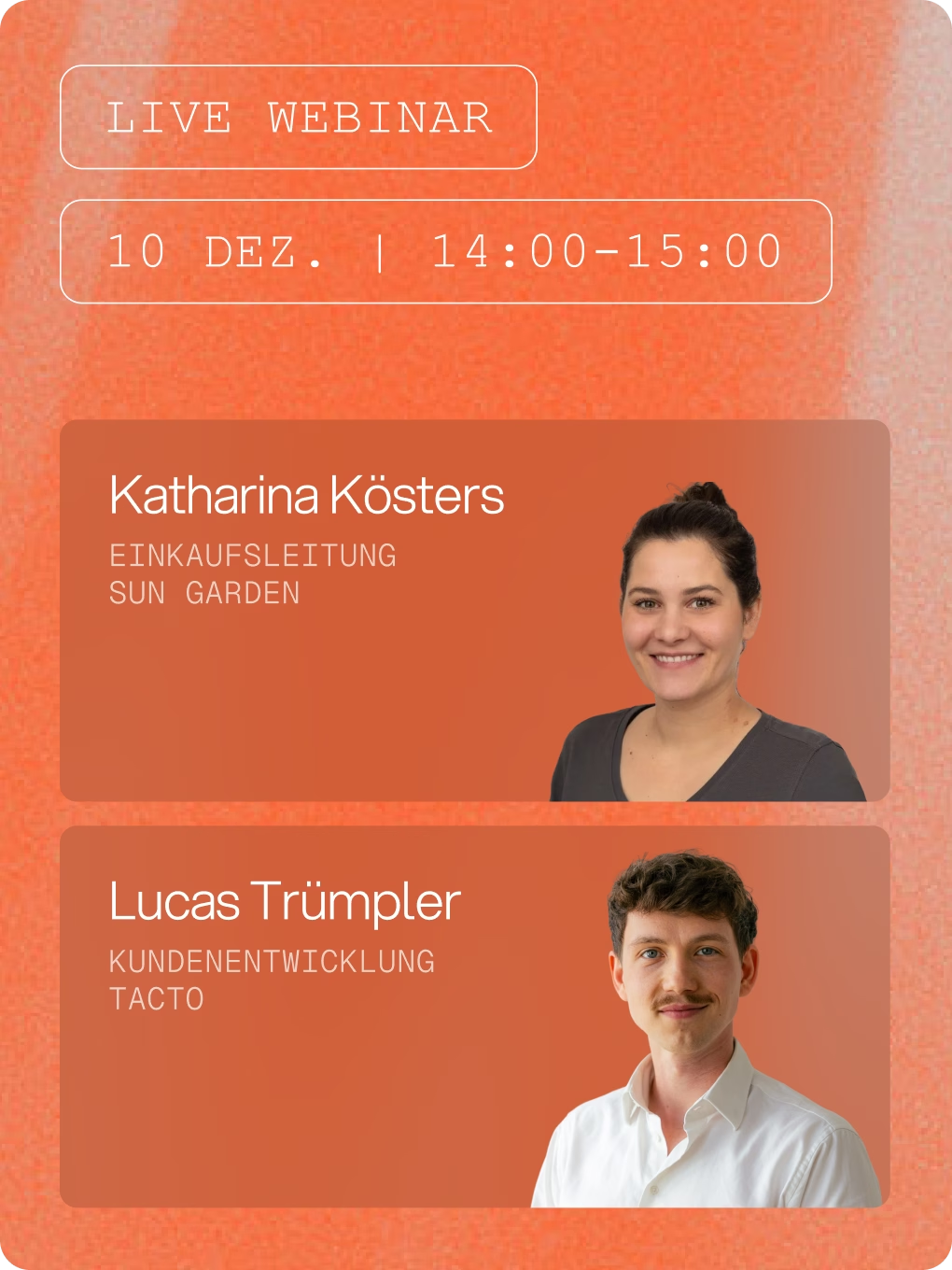Procurement Glossary
E-procurement in Procurement: digital procurement processes and systems
November 19, 2025
E-procurement in Procurement refers to the electronic handling of procurement processes via digital platforms and systems. This technology is revolutionizing traditional purchasing processes through automation, improved transparency and significant increases in efficiency. Find out below what e-procurement involves, what methods are available and how companies can benefit from digital procurement solutions.
Key Facts
- E-procurement automates the entire purchase-to-pay process from requisition to invoicing
- Digital catalogs and supplier portals provide direct access to supplier ranges
- Automated approval workflows reduce throughput times by up to 70%
- Integration into ERP systems ensures seamless data transfer and compliance
- Mobile applications enable location-independent procurement decisions
Contents
Definition: E-Procurement in Procurement
E-procurement encompasses all electronic procurement activities that are processed via digital platforms and systems. This technology integrates various procurement processes in a standardized digital environment.
Core components of e-procurement
The essential components of modern e-procurement systems comprise several integrated modules:
- Electronic catalogs with structured product data and prices
- Automated order processing and order management
- Digital invoice processing and three-way match
- Supplier portals for direct communication and data exchange
E-procurement vs. traditional procurement
In contrast to paper-based procurement, e-procurement offers complete process transparency and traceability. While traditional methods often require media disruptions and manual intervention, digital procurement enables end-to-end automation.
Importance of e-procurement in modern Procurement
Today, e-procurement is indispensable for competitive procurement organizations. It enables a strategic focus on supplier development and cost optimization, while operational activities are automated.
Methods and procedures
The implementation of e-procurement requires structured procedures and proven methods. Various approaches enable the gradual digitalization of procurement processes.
System selection and implementation strategy
The successful introduction of e-procurement begins with a systematic requirements analysis. Companies must first analyze their specific procurement processes and define suitable system architectures.
- Evaluation of existing ERP integration and interfaces
- Definition of workflow rules and approval processes
- Choice between cloud-based and on-premise solutions
Catalog management and content maintenance
Effective catalog management forms the foundation of successful e-procurement systems. The structured preparation of product data and prices requires continuous maintenance and quality assurance.
Change management and user training
The acceptance of new e-procurement systems depends largely on user-friendliness and the training concept. Structured training measures and continuous support ensure successful system implementation.

Tacto Intelligence
Combines deep procurement knowledge with the most powerful AI agents for strong Procurement.
Key figures for managing e-procurement in Procurement
Measuring the success of e-procurement systems requires specific key figures that evaluate both operational efficiency and strategic target achievement. Systematic performance monitoring enables continuous optimization.
Process efficiency key figures
Operational KPIs measure the speed and quality of digital procurement processes. These metrics show the direct impact of e-procurement implementation on daily workflows.
- Average order processing time (order-to-delivery time)
- Proportion of automated orders without manual intervention
- Error rate for electronic orders and invoices
- Number of no-touch orders per period
Cost reduction and ROI metrics
Financial KPIs evaluate the economic benefits of e-procurement investments. These KPIs demonstrate the contribution to corporate profitability and justify further digitalization measures.
Supplier and compliance indicators
Strategic KPIs measure the quality of supplier integration and compliance. High supplier participation and full compliance are prerequisites for sustainable e-procurement success.
Risks, dependencies and countermeasures
In addition to their benefits, e-procurement systems also entail specific risks and dependencies. A systematic risk assessment is essential for successful implementation.
Technical default risks and system dependencies
The digitalization of procurement processes creates critical system dependencies. Server failures or network problems can paralyze entire procurement processes and cause significant business interruptions.
- Implementation of redundant system architectures
- Regular backup strategies and disaster recovery
- Definition of alternative procurement channels for emergencies
Data protection and cybersecurity threats
E-procurement systems process sensitive business data and supplier information. Cyber attacks can lead to data loss, business interruption and compliance breaches. Robust security measures are therefore essential.
Supplier integration and acceptance problems
The successful use of e-procurement requires the active participation of all suppliers. Resistance to digital processes or technical incompatibilities can significantly impair system effectiveness and require structured supplier enablement programs.
Practical example
A medium-sized mechanical engineering company implements an e-procurement solution for the procurement of C-parts and indirect materials. The system integrates electronic catalogs from five main suppliers and automates the entire procure-to-pay process. Employees can order directly from supplier catalogs via an intuitive portal, while automated workflows control approval based on defined budget limits.
- Reduction in order processing time from 5 days to 2 hours
- Reduce process costs by 60% through automation
- Increasing spending transparency through digital tracking
Trends & developments in e-procurement
The e-procurement landscape is constantly evolving, driven by technological innovations and changing business requirements. New technologies are revolutionizing traditional procurement approaches.
Artificial intelligence and machine learning
AI-based systems transform e-procurement through intelligent automation and predictive analytics. Machine learning optimizes order proposals, supplier selection and price negotiations based on historical data and market trends.
- Automated spend analysis with AI-supported insights
- Intelligent supplier evaluation and risk management
- Predictive analytics for demand planning and warehousing
Mobile-first and cloud-native solutions
Mobile e-procurement applications enable location-independent procurement decisions and accelerate approval processes. Cloud-native architectures offer scalability and reduced IT complexity.
Blockchain and digital contracts
Blockchain technology increases transparency and security in supply chains, while smart contracts enable automated contract processing. These developments strengthen trust between business partners and reduce transaction costs.
Conclusion
Today, e-procurement in Procurement is indispensable for competitive procurement organizations and enables significant increases in efficiency through process automation. Successful implementation requires strategic planning, structured change management and continuous optimization of digital procurement processes. Companies that systematically implement e-procurement benefit from reduced costs, improved transparency and a stronger strategic orientation of their purchasing organization.
FAQ
What is the difference between e-procurement and e-sourcing?
E-procurement focuses on the operational handling of ordering processes and transactions, while e-sourcing digitizes strategic procurement activities such as supplier searches, tenders and contract negotiations. Both areas complement each other in a holistic digital procurement strategy.
What requirements must be met for e-procurement?
Successful e-procurement implementation requires a stable IT infrastructure, structured master data, defined procurement processes and supplier readiness for digital collaboration. In addition, change management and employee training are crucial for acceptance.
How is data quality ensured in e-procurement systems?
Data quality is ensured by standardized master data management processes, automated validation rules and regular data cleansing. Suppliers must provide structured product data according to defined standards, while the system performs continuous quality checks.
What cost savings are realistic with e-procurement?
Typical cost savings are between 5-15% of total procurement costs, depending on the initial situation and scope of implementation. The main savings come from process automation, improved price transparency, reduced maverick buying and optimized supplier consolidation.



.avif)

.png)
.png)


.png)




